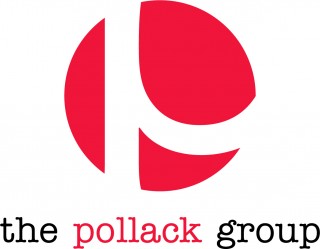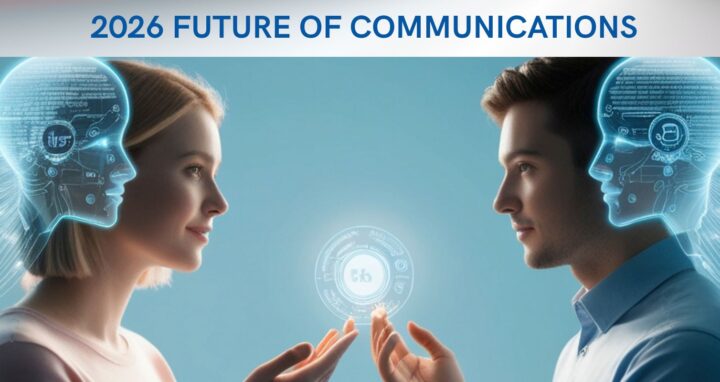By Stefan Pollack, The Worldcom Public Relations Group Global Board Chair, President, The Pollack Group, Adjunct Professor, USC Annenberg School for Communication and Journalism
The public relations and communications industry is undergoing one of the most profound transformations in its history. Forces like artificial intelligence, hybrid work, media fragmentation, and political polarization are reshaping the way brands communicate with their audiences. The recently released USC Annenberg Center for Public Relations 2025 Global Communication Report provides a comprehensive look at these shifts, offering valuable insights for CMOs, brand managers, PR agency leaders, and corporate communication professionals navigating this evolving landscape.
Artificial Intelligence
One of the most striking takeaways from the report is that artificial intelligence plays a role in reshaping PR. AI is no longer a distant concept; it is actively transforming media monitoring, content creation, influencer outreach, and crisis response. Sixty percent of PR professionals believe AI will positively impact the industry, allowing for greater automation and efficiency. At the same time, nearly thirty percent fear that AI could fuel misinformation and undermine trust in media. The rise of AI also brings concerns about job displacement, especially for entry-level PR roles that traditionally involved press material development and media analytics. PR leaders must embrace AI’s potential while implementing ethical safeguards, ensuring that technology complements rather than replaces human expertise.
Hybrid and Remote Work
The workplace itself is also in a state of transition. The report clarifies that hybrid and remote work are no longer temporary adjustments but permanent expectations among professionals in the field. Seventy-four percent of PR professionals believe flexible work models will be the norm, with many even willing to take a pay cut to maintain remote work options. This shift presents challenges for PR agencies and corporate teams, which must balance offering flexibility and maintaining in-person collaboration, mentorship, and a cohesive company culture. As agencies and brands consider their future work policies, they must be mindful that the expectations of younger professionals differ significantly from those of more established leaders.
Changing Media Landscape
Equally transformative is the changing media landscape. Traditional media channels such as network television, print newspapers, and cable news continue to have a declining influence while digital-first platforms dominate. The report finds that fifty-three percent of PR professionals believe social media will be the most relevant communications channel by 2030. The rise of influencer marketing and podcasts further reflects this shift. However, there is a generational divide regarding media strategies. Younger professionals see TikTok, Instagram, and other digital platforms as essential tools, while older executives continue to emphasize traditional earned media. For PR strategies to remain effective, brands must embrace all storytelling methods that align with evolving audience behaviors, experimenting with emerging platforms while maintaining a commitment to credibility.
Political Polarization
Political polarization is another growing challenge, fundamentally altering how brands approach purpose-driven PR. A few years ago, nearly ninety percent of PR professionals believed companies should take a stand on social issues. Today, that number has dropped to fifty-two percent, signaling an industry-wide retreat from corporate activism. Brands have seen the risks of taking a public stance—most notably in controversies such as Bud Light’s marketing misstep. Many companies now weigh whether engaging in social issues will strengthen their reputation or expose them to potential backlash. PR teams must strategically guide their organizations, ensuring that any stance taken is authentic and aligned with the company’s values while being mindful of the risks in an increasingly divided landscape.
One of the biggest challenges facing the industry is the growing generational divide. Gen Z professionals prioritize digital storytelling, influencer marketing, and brand authenticity, while older generations emphasize traditional media strategies and leadership credibility. This divergence in approach creates tensions within organizations, with different age groups having different perceptions of success. Bridging this gap will require PR teams to integrate the digital fluency of younger professionals with the strategic expertise of industry veterans. Those who can effectively combine these perspectives will be best positioned to drive innovation and engagement in the coming years.
One of the most concerning aspects of this transformation is the rise of misinformation. AI-generated content, social media echo chambers, and declining trust in traditional news outlets have contributed to a credibility crisis. Nearly half of PR professionals believe AI will increase misinformation, making fact-checking and responsible content creation more critical than ever. In an era where misinformation spreads rapidly, PR leaders must take on the role of guardians of truth, investing in media literacy, source verification, and proactive reputation management.
As the role of PR continues to evolve, so must the skillsets required to thrive in the industry. Writing remains a foundational skill, but its application has expanded beyond press releases to include social media content, AI-assisted messaging, and strategic digital storytelling. Influencer relations, video production, and data analytics are now essential tools for communications professionals. Those who can master AI-driven insights and digital engagement strategies will have a distinct competitive advantage in the years ahead.
The 2025 Global Communication Report makes one thing clear: PR and communications are experiencing a fundamental shift, one that requires agility, adaptability, and innovation. Brands that successfully integrate AI, rethink media strategies, and balance flexibility with corporate culture will emerge as leaders in this new era. At the same time, PR professionals must be prepared to navigate the complexities of an increasingly polarized world while upholding credibility and ethical responsibility in their storytelling.
Key Takeaways from the 2025 Global Communication Report
- AI is transforming PR but concerns about misinformation and job displacement must be addressed.
- Hybrid and remote work are here to stay, requiring PR teams to adapt their work models.
- Traditional media is declining while social media, podcasts, and influencer marketing take center stage.
- Political polarization is reshaping corporate communications, with brands becoming more cautious about taking public stances.
- Generational divides in PR strategy are growing, requiring the integration of digital fluency with traditional expertise.
- Misinformation and media trust are significant challenges, making fact-checking and credibility-building critical.
- The skillset for PR professionals is evolving, with AI literacy, digital storytelling, and data analytics becoming essential.
Those who can anticipate these shifts, embrace new technologies, and adapt to an increasingly complex communications landscape will shape the future of PR.
Download the full report at: USC Annenberg Center for Public Relations 2025 Global Communication Report




